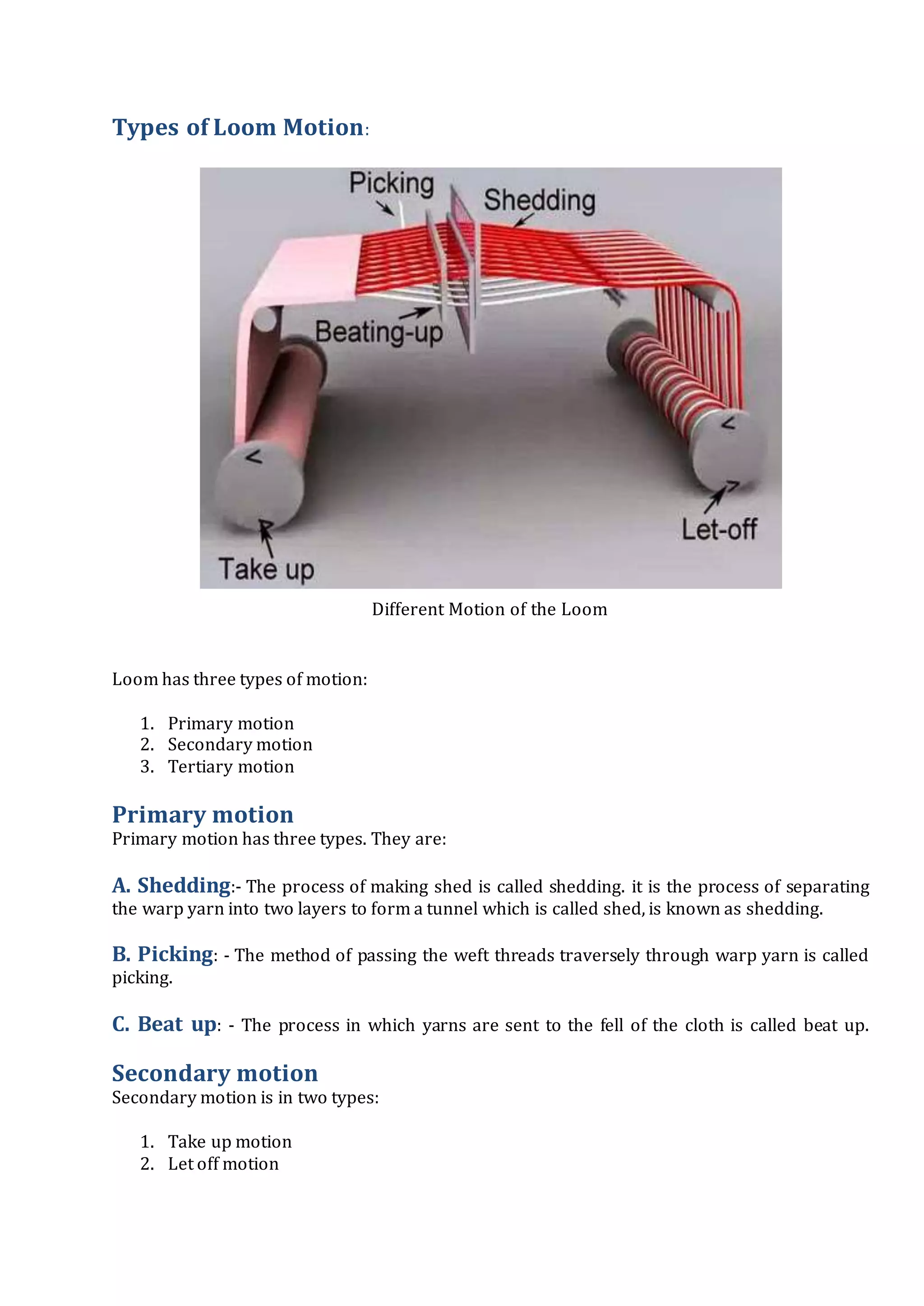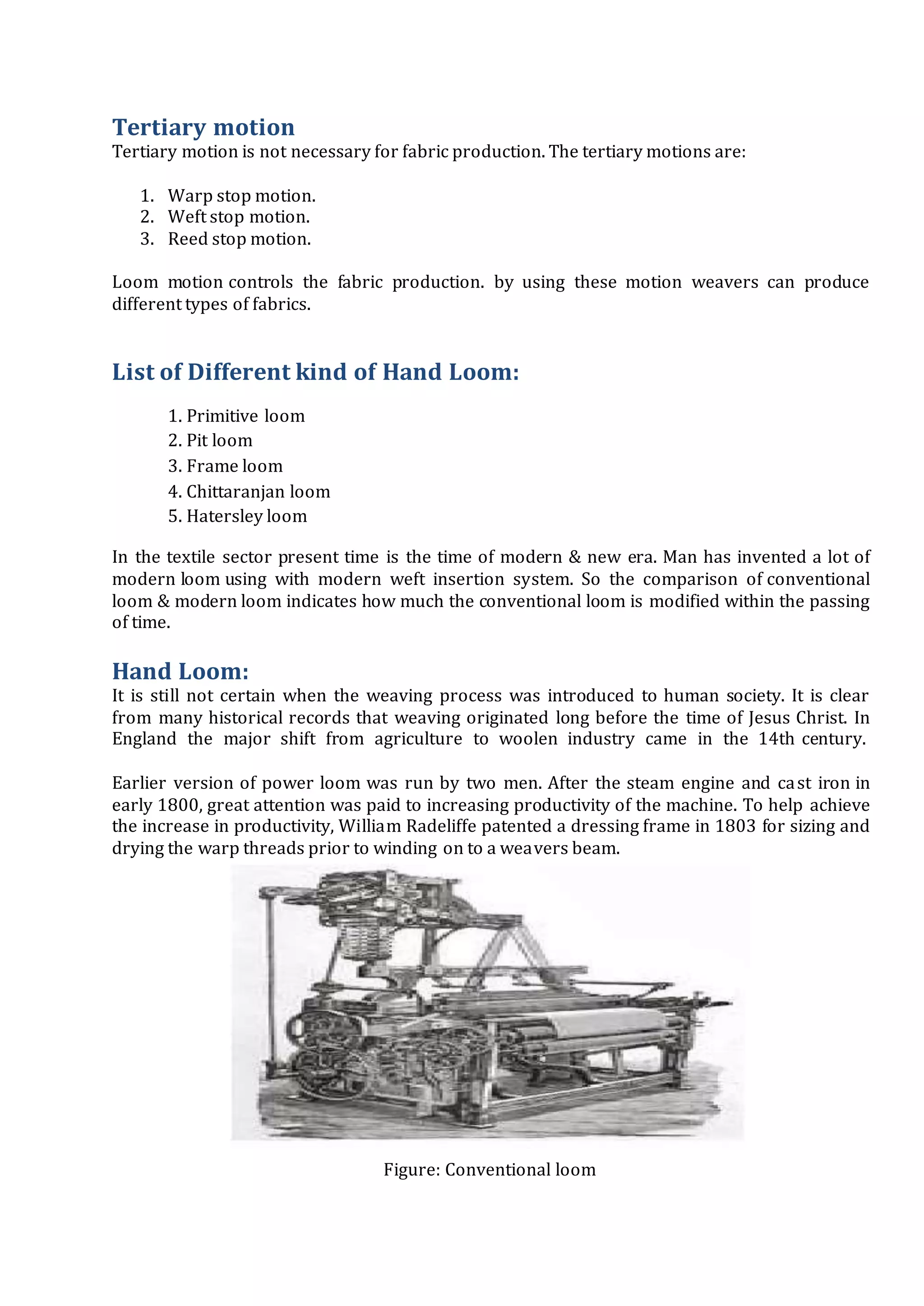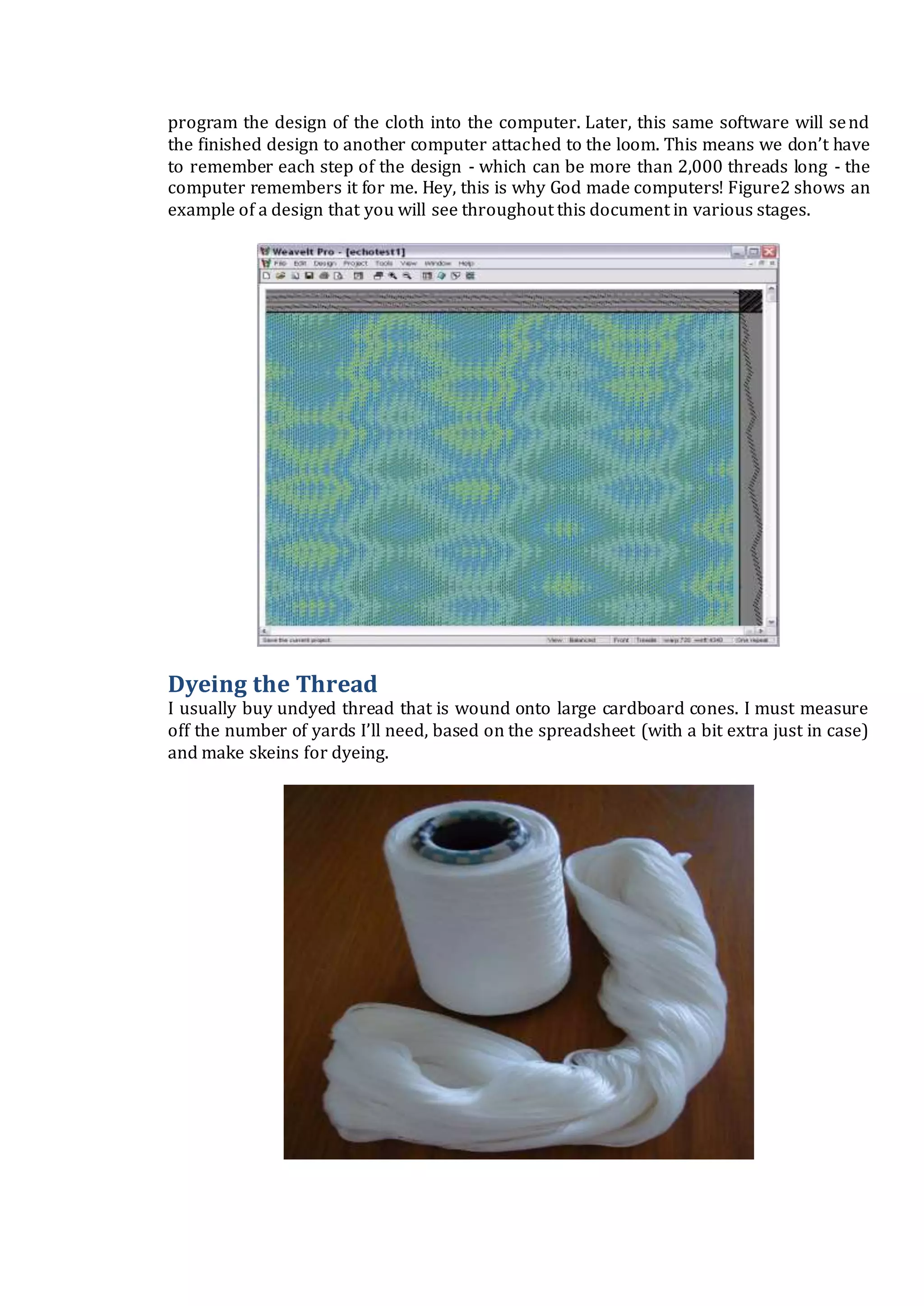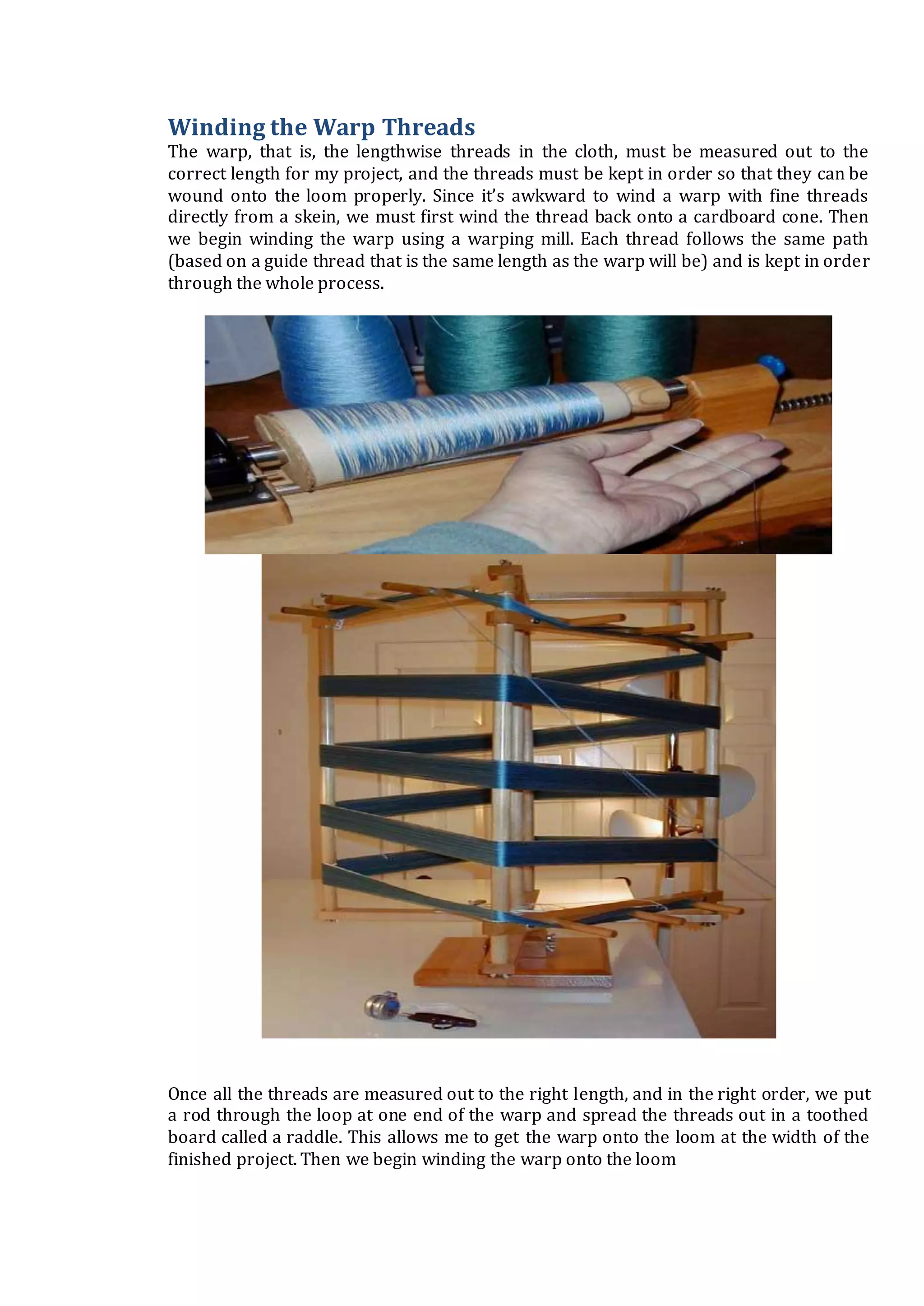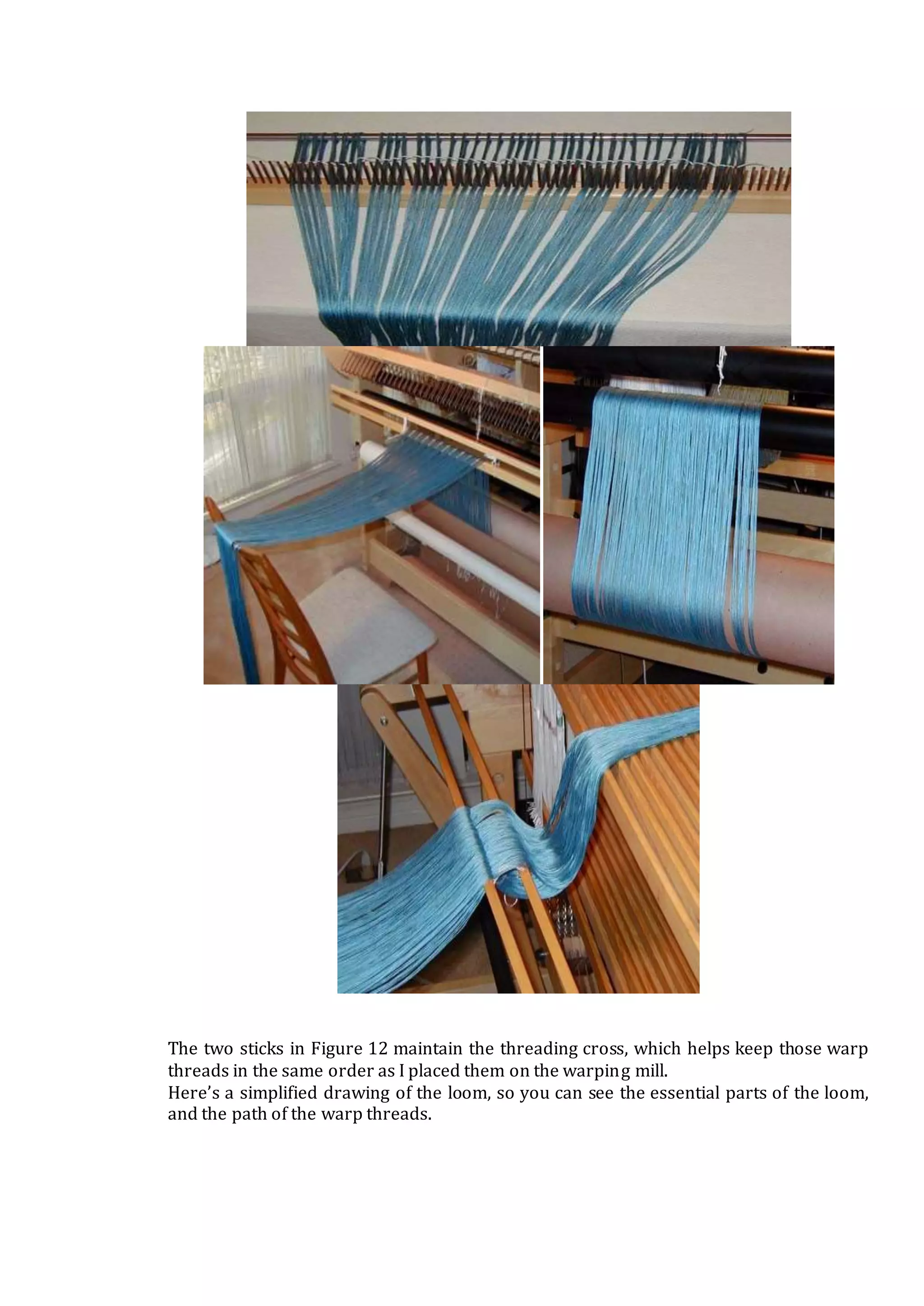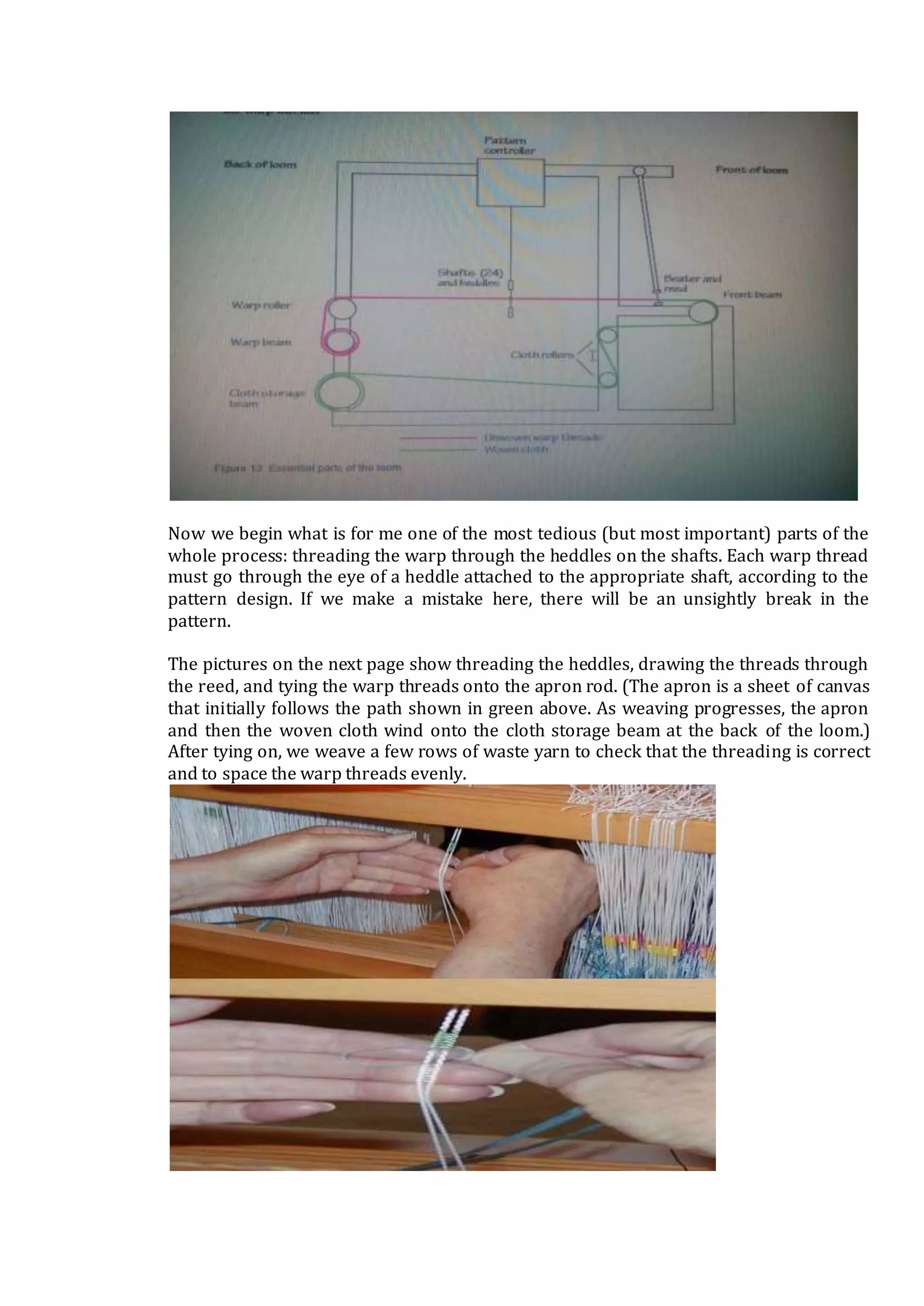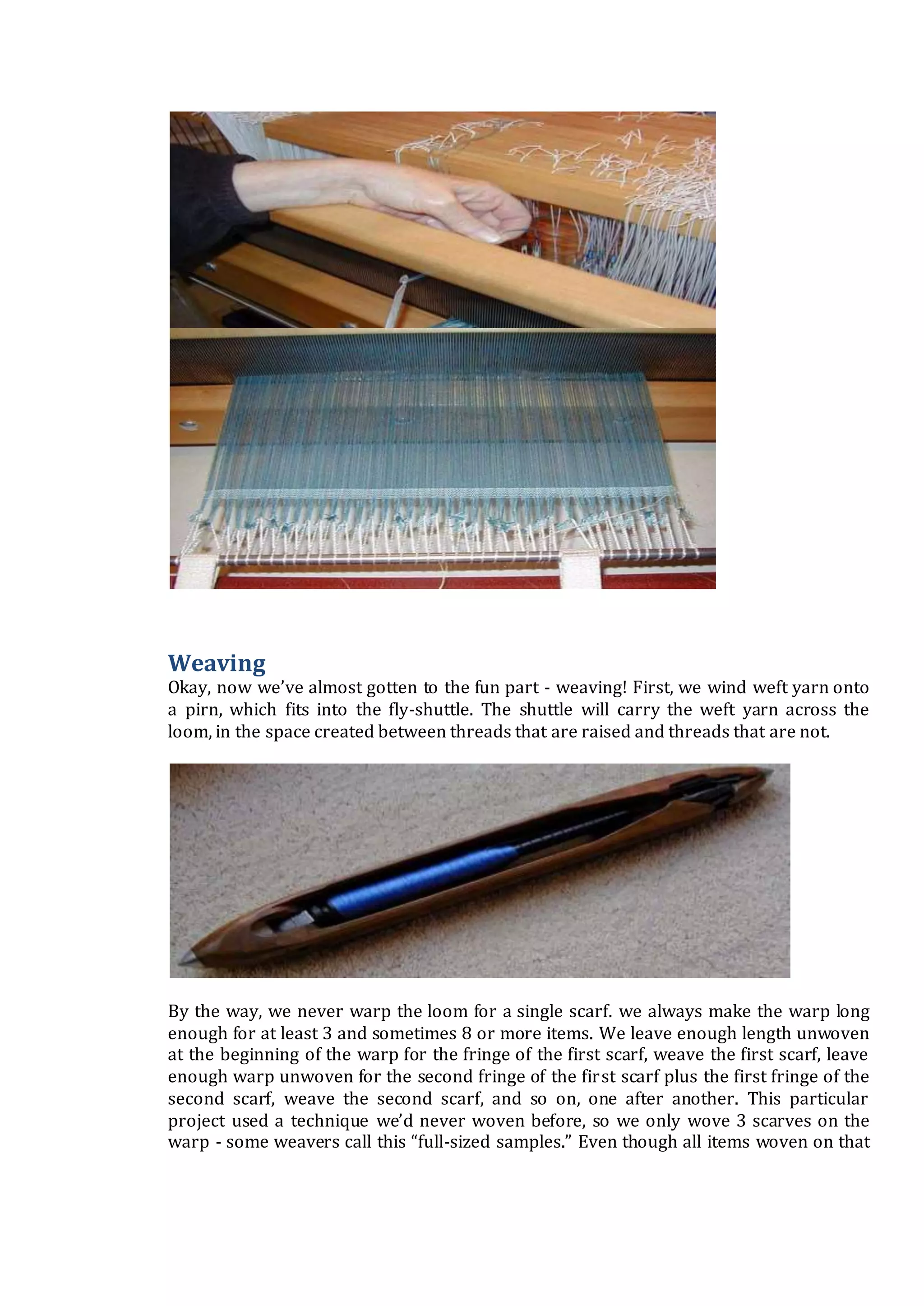Loom is a machine used for weaving fabric by interlacing warp and weft threads. Looms have evolved over thousands of years from simple wooden hand looms to modern power looms driven by electricity. Key developments include the fly shuttle in 1733, Cartwright's power loom in 1785, individual electric motor drives in the 1930s, and modern automated looms with features like projectile, rapier, and air jet weft insertion systems. The complete weaving process involves preparing warp threads, designing the pattern, dyeing yarn, winding the warp, threading the loom, weaving, and finishing the fabric.


